Streamer Fishing In Ontario
What is a Streamer? A streamer is a fly that imitates a bait fish or swimming animal that larger trout, steelhead and salmon might prey on. A streamer can imitate any type of fish species, or other trout food sources like a mouse, a frog, crayfish, leaches or any other animal that may swim in trout waters.
Why Streamer Fish? In recent years streamer fishing has grown and there are a number of reasons why fly anglers would choose to streamer fish in Ontario rivers.
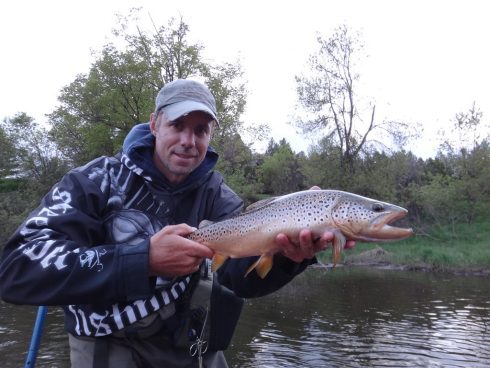
This brown trout was caught on a large streamer while scouting out a new section of river on the drift boat. We moved multiple big fish on that trip and landed a couple of good ones all using streamers.
Streamers move fast and cover lots of water if done correctly and are a great way to locate some of the biggest fish in the river.
I often use streamers to locate big fish that I can go back when guiding my clients.
Recent studies show that in some river systems the largest fish will mostly feed only on high caloric food sources such as other fish. Big fish, big meal, right! I fully agree with that statement in some situations.
This means that there are times when the only chance you have at catching the biggest trout in the pool is with a large enough fly is presented that will entice them to feed, and often that’s a streamer fly.
For some anglers it’s not just the opportunity for the biggest fish but it’s also because of excitement from the veracious strikes that streamers elicit in some of these bigger trout.
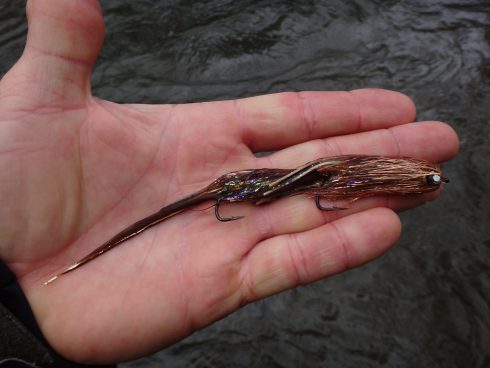
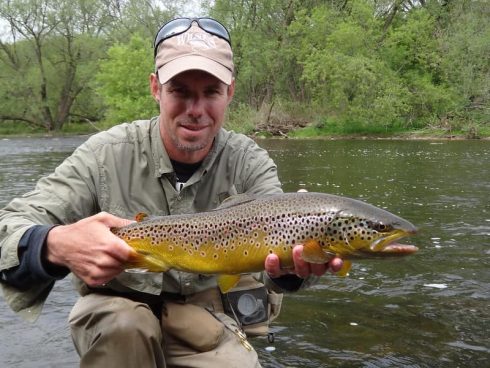
Becoming a better streamer angler: For many anglers they think casting streamers to trout looks simple and takes no real skill at all, you simply just cast it out and strip it in, right? Wrong!!
Done poorly, streamer fishing is not very productive and can be a lot of work for very little results. Sore shoulder and no fish is not want you want so if this basic streamer fishing style is how you streamer fish, then you are not catching anywhere near as many big trout as you should be and you’re working way to hard for no fish. Done correctly there is so much more to good, effective streamer fishing.
Presentation Is Critical: If you really want to get good at streamer fishing there are some key elements you will want to learn and perfect.
Just because you have a great streamer on the line doesn’t mean the fish will eat it. Knowing the many different retrieves is critical in maximizing your success and getting more trout to want to move from their resting spots to hit your streamer. Understanding what triggers these big fish at different times and under different conditions will improve your chances. Also knowing what colors to uses, and at what depths to fish will help you increase your chances. All these key elements of streamer fishing are the things I teach during Advanced Streamer lessons and during guided trips where we focus on streamer fishing.
Most guys that take our classes are surprised at how much more there is to streamer fishing and how effecting the tactics we I teach can be.
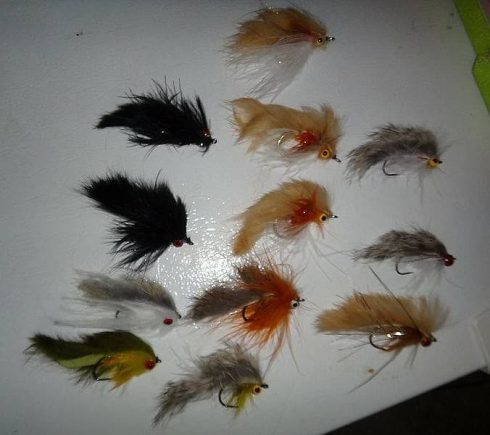
Choosing The Right Streamer Patterns: There are thousands of streamer patterns now available on the internet. Single hook streamers, articulated streamers, weighted streamers, old patterns, new patterns, etc. There’s so many sizes from about an inch to about 8 or 9 inches for trout. The color combinations are crazy with all the different looks that imitate the many baitfish species. There’s fat ones, skinny ones, shinny ones, everything can be so overwhelming and then if you want to tie you’re own that’s a whole other ball game.
When I started streamer fishing 30 years ago you rarely ever saw another angler doing it and the flies were so basic, yet so effective. Did that all change over time? Are the trout now only eating articulated zoo cougars or other crazy patterns? No? It’s a great idea to have a variety of sizes and colors of flies for all the different situations.
I have patterns that imitate other baitfish, leaches and ones that are attractor patterns and bright and ugly looking, and all work. I teach anglers what colors to use, how to choose those colors and sizes that best match the trout’s mood or the river conditions. I also teach anglers what flies to use after you get a big fish that strikes and misses your fly.
Weighted Flies Versus Non-Weighted Flies: I also believe there is a time and place for weighted streamers and non-weighted streamers. I use weighted streamers a lot because of the type of water that I fish and I find that there are times when all it takes is one or two pulls and the fish is hitting it and since non-weighted flies take some time to sink you may miss these bank or structure hugging trout.
The disadvantages to weighted flies are they require more work to tie, it’s rare to find weighted flies to buy in the stores, they are harder to cast and you loose some action when fishing them and lastly if you don’t start your retrieve quick enough or you pause or retrieve to slow they are more likely to snag up on the bottom of the river.

If you’re fishing mostly open water where trout are holding mid river a non-weighted fly could be a better choice for you. If you only have non-weighted streamers in your box adding a few split shots just above the fly can help it get down and stay down when you need it and then you can remove the weight when it’s not necessary. One big advantage to a non weighted fly is that they seam to have more action and hang better between pulls which may make it look more alive. They are also much easier to cast unless you are using a heavy sink tip.
You will find a mix of weighted and non-weighted flies in my box because I will use which ever one is best suited for the type of water I’m fishing. Regardless if you use weighted or non weighted flies you need to have some way to get the fly down and keep it down.
Fish eat fish, and at times a struggling, dying, or injured fish is just to hard for a trout to pass up and if a trout has the opportunity to grab another fish as a meal it will.
The little rainbow trout in this picture was grabbed by a large brown trout of around 20 inches while my client was bringing it in. This clearly shows you that big trout will eat large prey when they opportunity presents intself.
I have seen brown trout up to 30 inches grab smaller trout up to 8 t0 10 inches long and I have seen other species like pike try to eat another pike almost the same size.
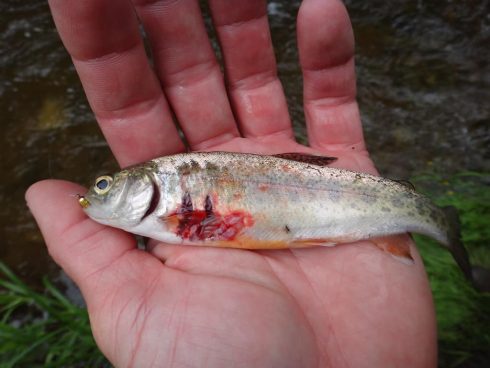
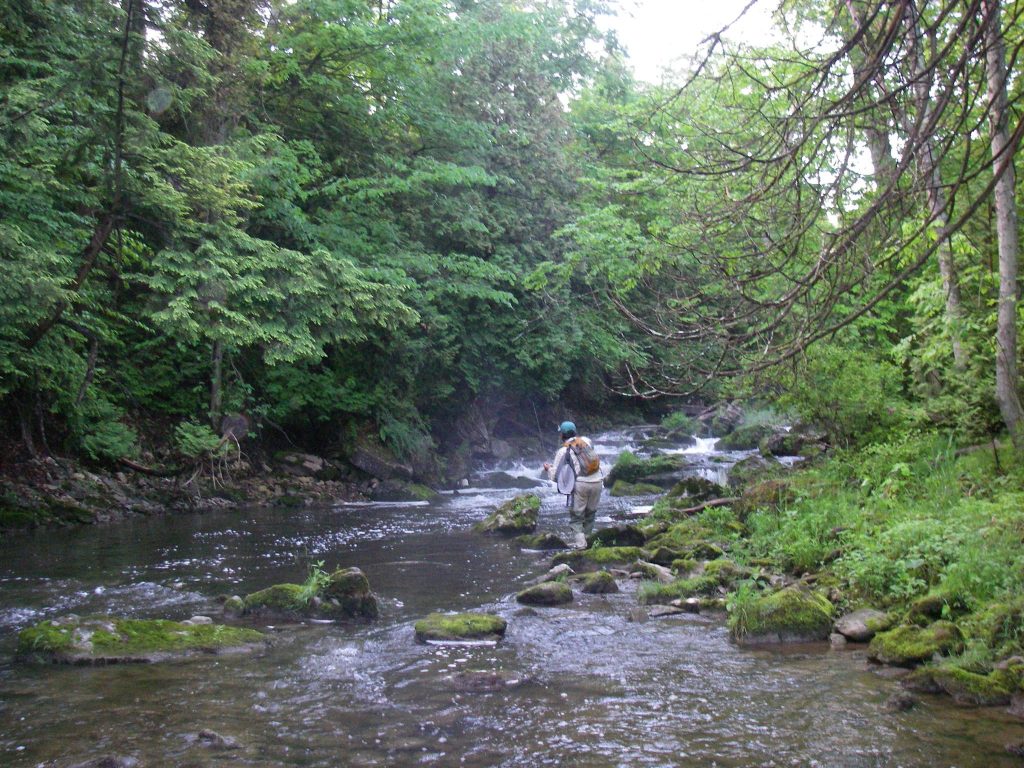
Shallow Versus Deep: How deep should your streamer go? This is a question I get asked a lot and the answer is “it depends” . There are many factors that determine if I want my streamer to go down only a foot or down five feet or more. Clarity of the water and mood of the fish are the biggest factors I consider when determining depth of retrieve but there are other factors as well. I use a couple of different methods for getting the fly down to the right zone and the type of retrieve I use to maximize my success.
Casting Streamer Flies: I tell my guide clients that I can tell an advanced angler over a beginner angler from a long ways away just by how many false casts it takes them to put the fly in the water. This is often very inefficient and often if not always results in lower umbers of trout.
I use a number of specific casting methods that not only allow you to cast less, cast more effectively, cover the water better and faster but also allow you to cast to almost any spot in almost any type of river conditions whether it be wide open easy water or tight cover.
The fish are there, so you just need to know how to cast that big fly to them in any condition, and then you need to know how to effectively fish it for maximum strikes.
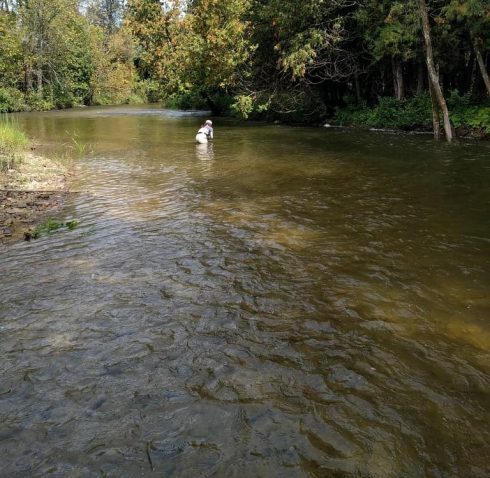
Here is a picture of an angler fishing fairly easy trout water with lots of back cast room but it’s not always that easy. Wide open rivers make streamer fishing easy but be careful because you may not be as hidden as you would be of there were lots of trees behind you.
Fishing streamers in tight cover requires skill and patience. Not only do you have trees, tall grasses and bushes behind you making a back cast nearly impossible but you may also have to cast to fish tucked in under tight cover like log jams and fallen trees. All these are obstacles that can prevent an angler from catching fish.
Knowing how to get your fly to the fish from far enough away that you don’t spook them can be challenging for new streamer anglers but just because its challenging doesn’t mean it’s impossible and with the right technique and some practice you can get a streamer almost anywhere with a lot less lost flies or hang ups.
Learning which retrieves work best to entice these bigger fish to leave their comfortable hiding spots under all that would is also a very important skill for any streamer angler.
We teach these simple yet effective methods in our streamer class and coach anglers during our guided trips if the want to learn how to fish streamers.
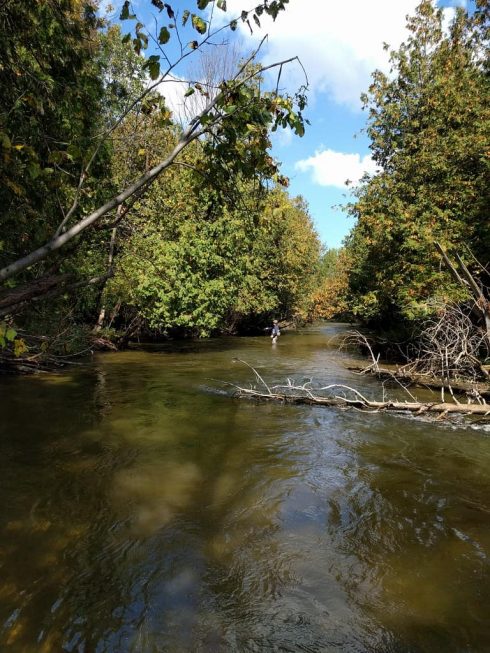

Dry Fly Streamer Fishing: Dry fly streamer fishing or top water fishing is simply just using a larger streamer pattern that floats and then twitching or pulling it across the surface to elicit an aggressive top water strike.
In our rivers this works great on trout, bass, pike and Musky. Some anglers are also targeting steelhead and salmon using flies on the surface.
Poppers and mouse patterns like the ones shown here are the most popular top water streamers for brown trout and brook trout in Ontario rivers but they are best when used early morning or late evening and even at night.
Top water streamer fishing has limited times when fish are active enough to come to the surface and there are times like during cold fronts when it’s impossible to get a fish to bite.
Steelhead and Salmon Streamer Fishing: Streamer fishing can also be deadly for big Ontario steelhead and salmon once they return to the rivers to spawn.
Some anglers use single hand rods and fish them with very similar methods as trout methods. Other anglers choose two handed rods known as Spey rods and use a swing type retrieve.
Both methods can work depending on the conditions and the fishes activity levels.
Pictured here is a large Ontario steelhead caught during high water in the spring. This steelhead hit a fly on the swing while incorporating some light twitching action to the fly.
Although a Spey rod was used I could have done the same thing with a single handed rod. For more information on Spey fishing go our Ontario Spey Fishing Page

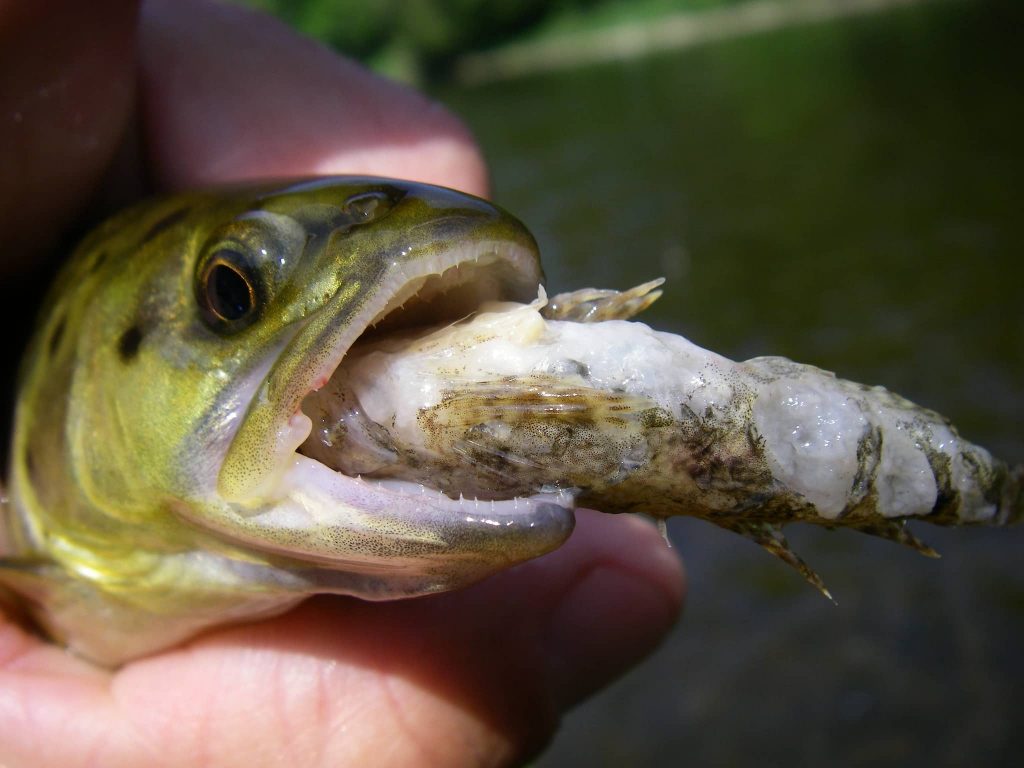
Even small fish will eat other fish. The fish in this picture was caught on a small streamer and once it was in the net I noticed that is had this partially digested fish in its throat.
Equipment For Streamer Fishing
Fly Rods are important to because you need a rod that can handle casting large streamer flies and sink tips or sinking lines. Back when I started I had one rod that I used for everything. That meant I was casting 5 inch weighted streamers on my 8’6 four weight rod. Lucky for me it was a fast rod and with practice I learned that I could open up my casting loops and still cast these big flies fairly well.
Now I mostly use 6 weight rods in the 8’6 to 9 foot size which makes casting streamers for big trout much easier and it also gives me control fighting the fish and gives me much more backbone to steer the big guys away from the log jams. I do like and recommend a medium fast to a fast action rod for most streamer fishing and the faster rods are a little better when using sinking lines. Since most of our rivers are on the smaller side and most casts are under 40 feet and most fishing is done by foot and not on a boat going with a larger rod is not required. The only time I go with a 7 weight rod is if I’m using a heavy sinking line and that is rare for me since I prefer floating lines for our smaller rivers. There are a few rods on the market specifically designed for streamer fishing but after trying a few of them I find it’s barely any different then a good standard use fast action rod, however that may different for other anglers depending on each anglers casting ability.
When streamer fishing for steelhead I would up size my rod to a 7 or 8 weight rod to give me even more control fighting these bigger fish and it also allows easier and longer casts on the bigger sections of the rivers where the steelhead are.
Streamer reels should have a large arbor reel with a decent drag since the big trout and possibly steelhead that you’ll be catching on these streamer will be big and hard fighting and a good drag will help you land that fish easier.
Fly Lines for streamer fishing are a matter of preference for most anglers but for me I have used many of my customers rods and line and I have found that some lines just cast better then others. I realized this one day when I was demonstrating how to water load a streamer and fire a 40 foot low cast under some trees to the spot where I knew a big trout hung out. It was easy to do with my Airflo line when I tried with my rod but after watching my client struggle over and over to get the same distance I grabbed his rod and tried to show him again on his rod, but like him, I struggled and that’s when I realized it was clearly the line that was sticking on the guides and preventing me from getting the distance that I wanted. Even after cleaning his line and guides I could still feel it sticking. So I tried again with my reel and it was a very noticeable difference. I quickly put my reel and line on his rod and he could make the casts he needed to. I have since experienced the very same results from other lines and I find they get even stickier in the heat of the day. For me I used a standard multi purpose tapered fly line from Airflo for most of my streamer fishing but recently I started using some lines designed just for streamer fishing like the Airflo Streamer Float line which I like a lot. You can get this line at Drift Outfitters in Toronto.
Disclaimer: Although I am currently on the Airflo guide program I have been using their lines long before I got involved with them and like all the companies that I work with I have chosen them, not them choosing me, and I choose them because I really like their products and because their products are best for the waters that I fish. I have turned down many other companies because I didn’t like what they had to offer or because their products were not the perfect fit for me.
Floating Lines: If you’re only going to have one line for streamer fishing I would recommend a floating line. Not only can that line be used for surface streamer fishing but it can be used to nymph or even dry fly fish. Not only that but you can easily add a separate poly leader to sink tip to it or just use weights above the fly or weighted flies to get your fly down and keep it down. Also, most of our rivers are on the smaller side and many sinking lines don’t work great in these rivers since the fish can often be tight to the far bank and a sinking line wont get it down fast enough.
Sinking Lines: In some of the bigger rivers and for steelhead in the larger lower sections I occasionally use sinking lines or sink tip lines. A couple of my favorite sinking lines for streamer fishing are the Airflo Shovel Head line or the Airflo Streamer Max Short lines
Poly leaders and sink tips: If you choose to use a floating fly line and want to use non-weighted flies you may need to add a sink tip or poly leader to get the best presentation. These are just add on sections that will add weight to the tip of your fly line and help keep your flies down. They can work great but they can also be more difficult to cast so keep that in mind.
Leaders and tippets are critical to make this all work well.
Where to fish: Big fish move daily, weekly and annually for many different reasons which I’m not going to get into here. Just know that I have seen 26 inch brown trout chasing minnows or cruising for crayfish in water so shallow that the tips of their fins are sticking out of the water but have never seen a single angler fish those spots. I have also caught big trout down 7 feet or more at certain times of the day. I’ve also caught the same fish 100 feet away and have caught the same big fish within a few inches of where I first caught them. In fact at times these big trout are so predictable that I’ve pointed to a spot and told my client that soon a big 23 incher will swim up and sit right there to feed and 20 minutes later I point that fish out as it moves from it’s deep holding spot and parks itself in the exact spot I said it would, and 5 minutes later it’s in the net. Big trout, I mean really big trout, often hold and feed in different water then the little fish do and big fish have the option to go where ever they want in the river without worrying about being eaten themselves. That is why I often fish bank to bank and fish multiple depths until I figure out where they are and where they will feed. Different times of the day or different water conditions will determine where they are to, so I fish everywhere and I only change my retrieves and sometimes change my flies depending on the situation or water type.
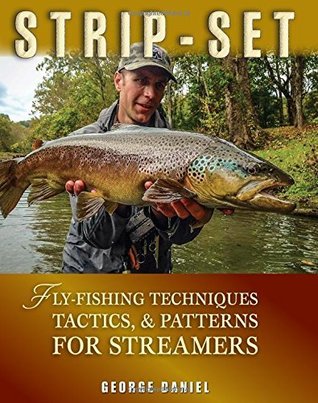
More About Streamer Fishing: There is a lot more about streamer fishing that can’t cover on here. There so much that I teach my clients while on the water that greatly improves their ability to catch more big fish, more often.
In fact there is so much more about streamer fishing that there are entire books just about streamer fishing, but still, nothing beats a good experienced guide that can work with you and coach you on all the tactics for successful streamer fishing. This book is one of the best books on modern streamer fishing available and I was lucky enough to spend some time on the water with the author learning his favorite style of streamer fishing.
If learning how to streamer fish effectively is something you want consider booking a guided lesson this year between Late April and September 31st.
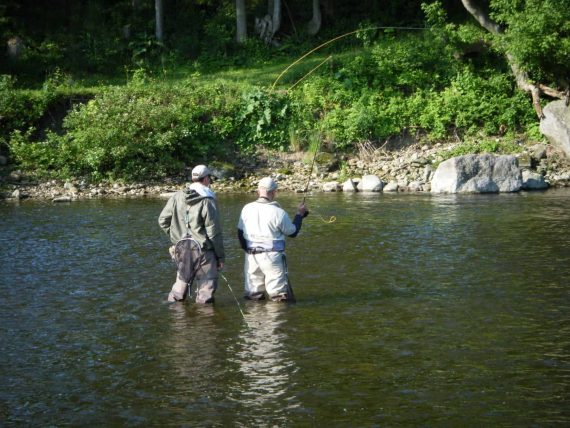
RIVER FISHING TIPS AND ADVICE
Have you ever wanted to know what the guides know? Now you can!
Anglers ask me all the time about what rods and reels and other gear that I recommend, or they ask me about my best flies, or my best methods or even which rivers are good to fish. I build a website that cover’s all of that and more . . . . . You should checkout our sister site where I tell you exactly what gear you need and i give you free tips and tricks to help you catch more fish. Check out www.ontariotroutandsteelhead.com
